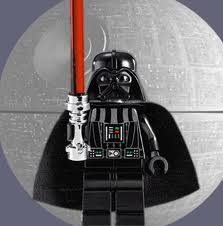
When the brick met the force
When the brick met the force
“Over my dead body” wasn’t quite the response that Peter Eio had been hoping for.
It was early 1997 and after months of hard work and careful negotiation, Eio, who was chief of the company’s operations in the Americas, had just made his pitch to the LEGO Group’s senior management.
His proposal was that LEGO should partner with Lucasfilm Ltd. to bring out a licensed line of LEGO Star Wars toys. The line would accompany the first instalment of the long-awaited Star Wars prequel trilogy, which was coming out in the spring of 1999.
However while many people at Lucasfilm were AFOLs – Adult Fans of LEGO and loved the idea, the senior players in LEGO’s head office in Billund, Danmark clearly weren’t so keen.
“Normally the Danes are very polite people,” recalled Eio. “We never had huge confrontations. But their initial reaction to Star Wars was one of a shock and horror that we would even suggest such a thing. It wasn’t the LEGO way.”
It was true that the deal would represent a significant change for LEGO. In the past LEGO had avoided partnerships and licensing deals, preferring to always go its own way, eschewing partnerships and licensing agreements. LEGO already had space themed kits.
“It was almost as if LEGO didn’t trust outside partners,” said Eio. “The thinking was always, ‘we’ll do it ourselves. We can do it better.’”
LEGO also continued to embrace one of founder Ole Kirk Christiansen’s core values: to never let war seem like child’s play. The prospect of introducing attack cruisers, assassin droids, and other Star Wars armaments worried many of the senior team.
“The very name, Star Wars, was anathema to the LEGO concept,” Eio asserted. “It was just so horrid to them that we’d even consider linking with a brand that was all about battle.”
Despite this resistance Eio believed that his “battle” – no his “mission” was to persuade the company to marry the Brick with the Force. For Eio, the most compelling reason to do a deal with Lucasfilm was the danger of not doing one.
Eio had seen how the United States was becoming a license-driven market and that hit movies and TV cartoon series were spinning off countless licensed products. By the mid-1990s half of all toys sold in the United States were licensed ones. Key competitors like Hasbro and Mattel weren’t avoiding deals but actively pursuing them with the likes of Disney and Pixar. Eio feared that if LEGO didn’t tap into this shift in the market, it would fall helplessly behind.
Eio teamed up with Howard Roffman, Lucasfilm’s licensing chief, and launched an internal campaign to convince the LEGO Group’s senior executives that the Star Wars deal was a good one.
First step was to ensure that LEGO saw Star Wars as more Ivanhoe than GI. Joe; that despite its futuristic space environment, at its heart it was a classic confrontation between good and evil, with little blood and no guts.
The next step was to involve the likely customers – the LEGO buying parents. Together Eio and Roffman arranged a large survey of parents not just in the United States but in Germany, LEGO’s largest and most conservative market. Perhaps not surprisingly parents in the U.S. overwhelmingly supported the idea; but more surprisingly, so did German parents.
Even in face of the campaign there was some continuing resistance to the Star Wars deal in Billund.
In the end, it came down to Kjeld Kirk Kristiansen, the CEO and the grandson of the original founder. Encouraged by the poll results and an ardent fan himself, he overruled his more tradition-bound executives and gave the deal his vote
And so finally what was to become one of the most successful partnerships in the toy industry’s history got go-ahead.
Launched to coincide with the release of The Phantom Menace, LEGO Star Wars was a staggering hit, was an immediate and huge success, accounting for more than one-sixth of company’s sales.

I’ve adapted this story from the book “Brick by Brick” which is both a good read and full of stories and anecdotes about LEGO. (Yes, I’m an AFOL too)